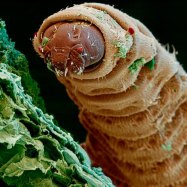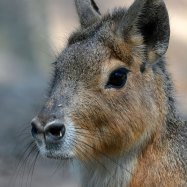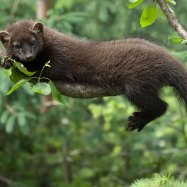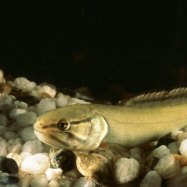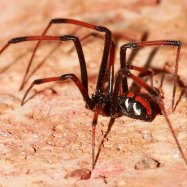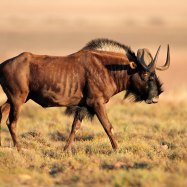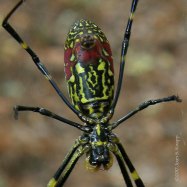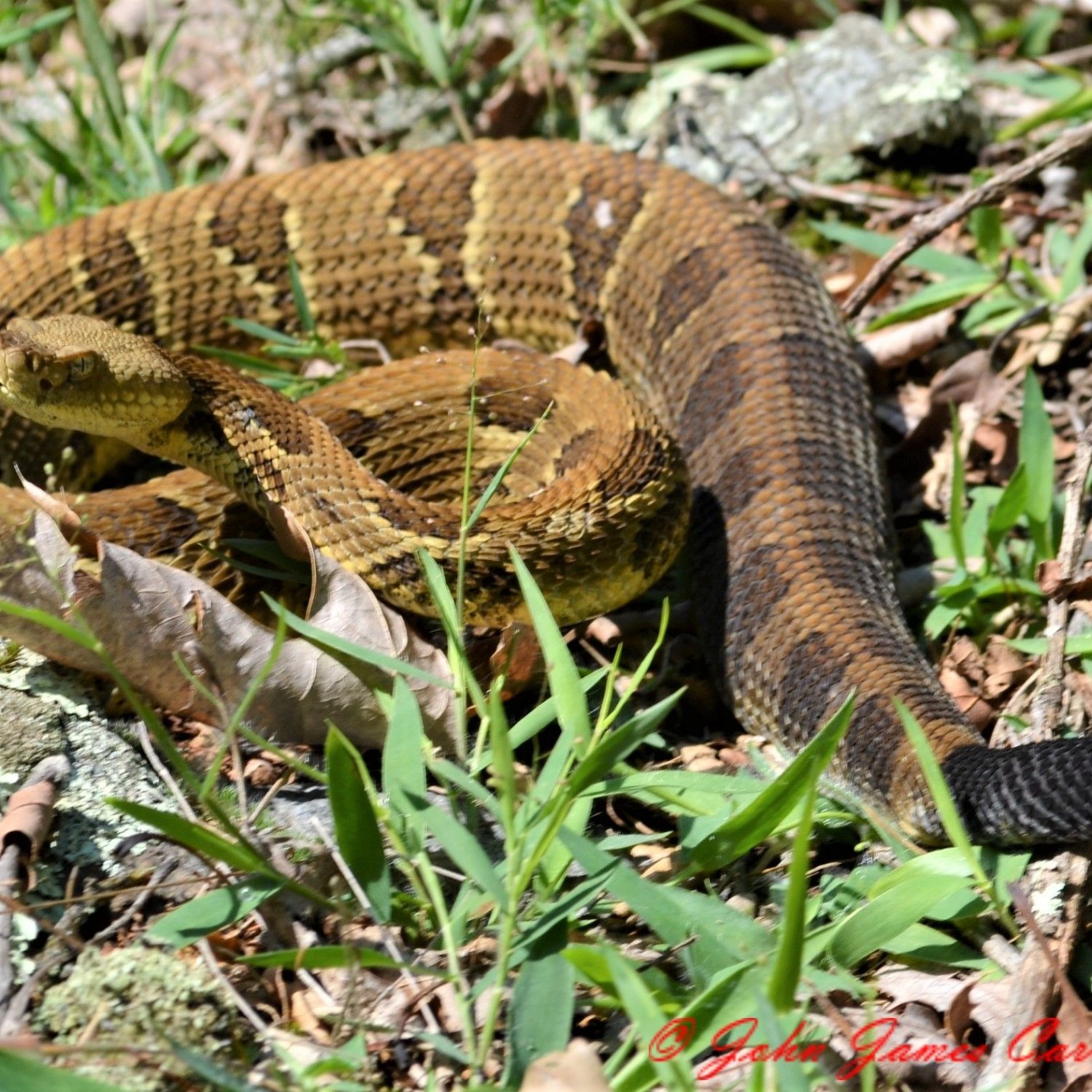
Timber Rattlesnake
3 to 5 feet
The timber rattlesnake is a fascinating animal found in the eastern United States. Also known as the canebrake rattlesnake, it belongs to the Viperidae family and can grow up to 3 to 5 feet in length. With a heavy-bodied frame and a distinctive triangular head, the timber rattlesnake is a master of camouflage and has a venomous bite. Stay safe and admire this creature from a distance when exploring its natural habitat. #TimberRattlesnake #EasternUS #Viperidae
Animal Details Summary:
Common Name: Timber Rattlesnake
Kingdom: Animalia
Habitat: Forests, woodlands, rocky areas
The Fascinating World of the Timber Rattlesnake
If you've ever ventured into the forests or woodlands of the eastern United States, you may have stumbled upon a creature that strikes fear in the hearts of many - the Timber Rattlesnake (Crotalus horridus). With its striking appearance and deadly venom, this reptile has captured the attention of nature enthusiasts and researchers alike. Known for its unique behavioral patterns and fascinating natural history, the Timber Rattlesnake is a truly remarkable animal that deserves a closer look.In this article, we will explore the world of the Timber Rattlesnake - from its scientific classification to its feeding habits and distribution Timber Rattlesnake. So, buckle up and get ready for an exciting journey into the wild world of this iconic snake.
The Scientific Classification of the Timber Rattlesnake
The Timber Rattlesnake, also known as the Canebrake Rattlesnake or Banded Rattlesnake, belongs to the kingdom Animalia, the phylum Chordata, and the class Reptilia. It belongs to the order Squamata, which includes other types of snakes and lizards, and the family Viperidae, which comprises venomous snakes.The scientific name of the Timber Rattlesnake, Crotalus horridus, is derived from two Latin words - "crotalus," meaning rattle, and "horridus," meaning rough or prickly. This aptly describes the distinctive rattling sound the snake makes as a warning signal and the rough, bumpy appearance of its body.
The Habitat of the Timber Rattlesnake
The Timber Rattlesnake is mainly found in the eastern United States, from New England to Georgia, and as far west as Texas and Minnesota. Its preferred habitat includes dense forests, woodlands, and rocky areas. These snakes are known to bask in sunny spots during cooler months and seek shade in the summer. They often seek shelter in rock crevices, tree stumps, and underground burrows Texas Spiny Lizard.The rocky areas provide crevices for shelter and abundant vegetation for hunting prey. Forested areas also offer ideal conditions for thermoregulation - important for maintaining body temperatures and the snake's overall metabolic function.
Feeding Habits of the Timber Rattlesnake
As carnivorous animals, Timber Rattlesnakes primarily feed on small mammals like mice, chipmunks, squirrels, and rabbits. Occasionally, they may also prey on birds, lizards, and other snakes. These snakes are ambush predators, laying still and waiting for their prey to pass by before striking quickly and injecting their venom.Timber Rattlesnakes use their venom to immobilize their prey and start the digestion process. Unlike other snakes that swallow their prey whole, Timber Rattlesnakes use their powerful jaws to crush and break their prey into smaller pieces before consuming them.
Interestingly, these snakes can go weeks or even months without eating, making them incredibly efficient predators. This also allows them to conserve energy and adapt to their environment, making them well-suited to surviving in harsh conditions.
The Distribution of the Timber Rattlesnake
The Timber Rattlesnake is found mainly in the eastern United States, but within that region, its distribution is not evenly spread out. In northern areas, their population is sparse, with sightings mainly in Minnesota, Wisconsin, and Maine. However, in the southern and central parts of the range, they are more abundant.In some states, the snake's habitats have fragmented due to human activity and development, leading to a decline in their population. This is a cause for concern, as the Timber Rattlesnake plays a vital role in maintaining the balance of the ecosystem by controlling prey populations and serving as prey to other animals.
The Appearance of the Timber Rattlesnake
The Timber Rattlesnake has a distinct appearance that sets it apart from other snakes. It has a thick, heavy-bodied build, measuring around 3 to 5 feet in length, and can weigh up to 10 pounds. Its head is broad and triangular, with small, heat-sensing pits between the eyes and nostrils - an adaptation that helps the snake to locate prey and sense its environment.One of the most recognizable features of the Timber Rattlesnake is its coloration. It usually has a grayish-brown base color with dark brown or black crossbands stretching down its body. These crossbands are more prominent in younger snakes and may fade or break down with age. Some Timber Rattlesnake populations also have a lighter brown, reddish, or orange coloration.
Another striking feature of this snake is its rattle. It is made up of segments of keratin, the same material that makes up our hair and nails. When these segments rub against each other, it creates the iconic rattling sound that serves as a warning to potential predators.
Myths and Misconceptions about the Timber Rattlesnake
Despite their essential role in the ecosystem, Timber Rattlesnakes have faced persecution for many years. Due to myths and misconceptions surrounding these snakes, they have been killed by humans out of fear and misunderstanding. Here are some common myths about Timber Rattlesnakes and the truth behind them:- Myth: Rattlesnakes will chase you.
Fact: This is simply not true. Rattlesnakes are generally shy animals and will retreat when they sense humans approaching. If cornered or threatened, they may defend themselves with their venomous bite, but they will not chase after humans.
- Myth: All rattlesnakes are aggressive.
Fact: Like most animals, rattlesnakes will defend themselves when threatened. However, they do not actively seek out confrontations with humans. As long as they are left alone, they will not attack and only strike when they feel their life is in danger.
- Myth: Rattlesnakes are deadly creatures that should be killed on sight.
Fact: While the venom of the Timber Rattlesnake is potent and can be fatal if left untreated, they are not aggressive animals and will only use their venom as a last resort. Most bites occur when humans accidentally step on or disturb a rattlesnake, and they are trying to defend themselves. It is always best to give these animals their space and avoid confrontation.
Conservation Status of the Timber Rattlesnake
The Timber Rattlesnake is listed as a species of least concern on the International Union for Conservation of Nature (IUCN) Red List. In some states, they are considered a species of special concern, and laws have been put in place to protect them from being hunted or collected for the pet trade.However, human activities such as habitat destruction, indiscriminate killing, and road mortality pose a significant threat to their populations. The loss of forested areas and the fragmentation of habitats can result in the isolation of populations and reduced gene flow, leading to genetic bottlenecks and a decline in genetic diversity.
Therefore, it is crucial to raise awareness about the importance of these snakes and their role in the ecosystem. By understanding and respecting these creatures, we can coexist with them in their natural habitat.
Conclusion
The Timber Rattlesnake is an iconic and fascinating animal that is both feared and admired. Its presence in the eastern United States is a reminder of the diverse and complex ecosystem that we are fortunate to share. While caution should be exercised around these snakes, they are an essential part of the natural world and deserve our respect and protection. So, next time you are out on a hike and come across a Timber Rattlesnake, take a moment to appreciate this remarkable animal and its significance in our environment.

Timber Rattlesnake
Animal Details Timber Rattlesnake - Scientific Name: Crotalus horridus
- Category: Animals T
- Scientific Name: Crotalus horridus
- Common Name: Timber Rattlesnake
- Kingdom: Animalia
- Phylum: Chordata
- Class: Reptilia
- Order: Squamata
- Family: Viperidae
- Habitat: Forests, woodlands, rocky areas
- Feeding Method: Carnivorous
- Geographical Distribution: Eastern United States
- Country of Origin: United States
- Location: Eastern United States
- Animal Coloration: Grayish-brown with darker brown or black crossbands
- Body Shape: Heavy-bodied with a triangular head
- Length: 3 to 5 feet
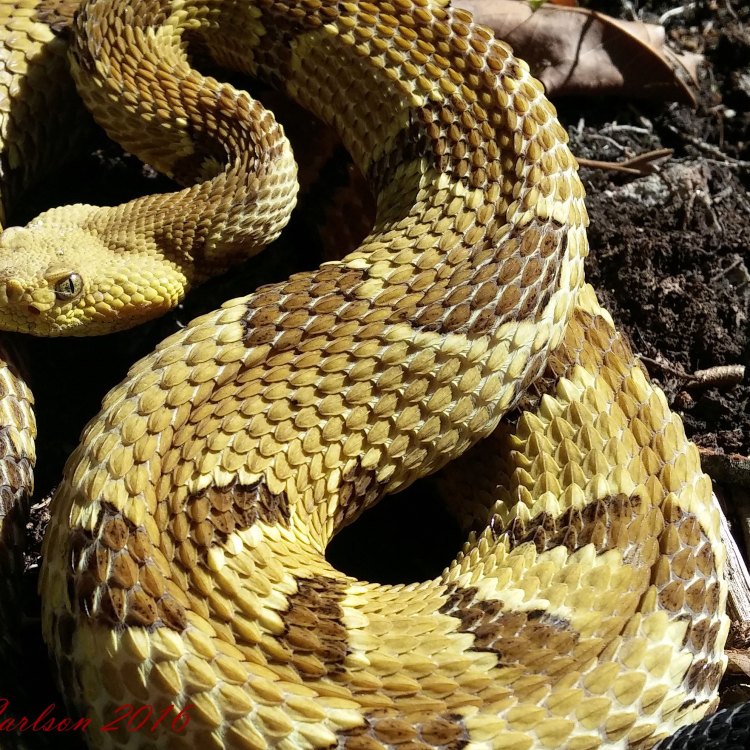
Timber Rattlesnake
- Adult Size: 3 to 5 feet
- Average Lifespan: Up to 30 years
- Reproduction: Sexual
- Reproductive Behavior: Mate in the spring, give birth to live young
- Sound or Call: Rattle its tail to produce a warning noise
- Migration Pattern: Limited migration within its range
- Social Groups: Solitary
- Behavior: Mostly active at night, sunbathe during the day
- Threats: Habitat loss, road mortality, persecution
- Conservation Status: Least Concern
- Impact on Ecosystem: Apex predator, helps control rodent populations
- Human Use: Not used for any significant commercial purposes
- Distinctive Features: Rattle at the end of its tail, venomous fangs
- Interesting Facts: Timber rattlesnakes have a heat-sensing pit organ on each side of their face to detect warm-blooded prey
- Predator: Large mammals, birds of prey, other snakes
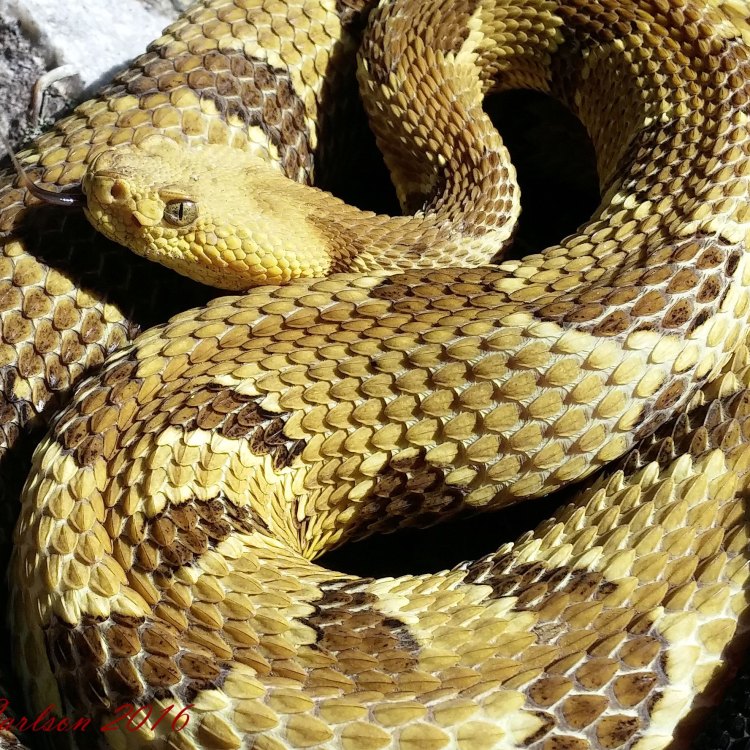
Crotalus horridus
The Secretive and Powerful Predator: Timber Rattlesnake
Hidden among the trees and rocks of deciduous forests in North America, the timber rattlesnake (Crotalus horridus) is a fearsome predator that often goes unnoticed. Covered in a distinctive pattern of brown, black, and gray scales, this venomous snake is both a symbol of fear and a vital member of the ecosystem.But despite its unique features and important role in the environment, the timber rattlesnake faces many threats to its survival. From habitat loss to human persecution, the future of this elusive reptile is uncertain PeaceOfAnimals.Com. In this article, we will delve deeper into the world of the timber rattlesnake and uncover its secrets.
A Creature of Size, Longevity, and Reproduction
Measuring between 3 to 5 feet in length and weighing up to 10 pounds, the timber rattlesnake is one of the largest and heaviest venomous snakes in North America. With its thick body and large triangular head, it is easy to identify and avoid, as its venom can be dangerous to humans.But despite its potentially lethal bite, the timber rattlesnake is a fascinating creature. It can live up to 30 years in the wild, making it one of the longest-lived snakes in the world. And just like other snakes, it reproduces sexually, with males seeking out females in the spring to mate.
The reproductive behavior of timber rattlesnakes is also unique. Instead of laying eggs like most snakes, females give birth to live young, typically around 6 to 10 after a gestation period of 5 to 6 months. The newborn snakes are independent and are immediately left to fend for themselves Therizinosaurus.
The Vocal Warning: Rattling of the Tail
One of the most distinctive features of the timber rattlesnake is its infamous rattle at the end of its tail. This appendage is made up of a series of interlocking segments called "rattles" that shake and produce a loud and intimidating sound when the snake feels threatened.But the rattles also serve as a warning to potential predators or humans. It is the signature alarm call of the timber rattlesnake, signaling that it is ready to defend itself and should be avoided. When the snake moves, the segments of the rattle rub against each other, creating a unique noise that can be heard up to 60 feet away.
Interestingly, rattlesnakes are not born with a rattle. Instead, they gain a new segment every time they shed their skin, which happens about two to three times a year. This adds to the mystery and power of these creatures, as their rattle only grows with age and sheds light on their age and experience.
A Limited Traveler and A Lone Hunter
Unlike many other animals in the wild, timber rattlesnakes do not migrate extensively. Instead, they have a limited migration pattern within their range, usually traveling only a few miles to seek mates, hibernate, or find new hunting grounds.And while they may not move much, these solitary creatures are adept hunters. They are mostly active at night, using their heat-sensing pit organs to detect warm-blooded prey, such as rodents and small mammals. They then strike quickly, injecting venom through their long, hollow fangs, and waiting for their prey to succumb before swallowing it whole.
Survival in a Changing World: Threats and Conservation
Despite being an apex predator in its ecosystem, the timber rattlesnake is facing several threats to its survival. The most significant danger comes from habitat loss and degradation, as their preferred habitats are often cleared for agriculture, logging, and human settlement.Road mortality is another common cause of death for timber rattlesnakes, as they are often hit by cars while attempting to cross roads. And while they may be feared and misunderstood, they are also persecuted by humans who see them as a danger and often kill them out of fear.
But despite these threats, the timber rattlesnake is currently listed as "Least Concern" on the International Union for Conservation of Nature (IUCN) Red List. However, efforts are being made to protect this species, such as establishing protected areas and educating the public about their importance in the ecosystem.
The Power of the Timber Rattlesnake in the Ecosystem
Despite its menacing reputation, the timber rattlesnake plays a crucial role in the ecosystem as an apex predator. It helps control the population of rodents and small mammals, preventing them from overgrazing and potentially spreading diseases.Moreover, the presence of timber rattlesnakes in an area indicates a healthy ecosystem. As an indicator species, their presence or absence can indicate the overall health of an entire ecosystem, making their conservation even more critical.
The Danger and Fascination of the Timber Rattlesnake
While they may seem like creatures to be feared, the timber rattlesnake is a creature worthy of fascination and respect. Its unique features, such as the rattle and heat-sensing pit organ, make it a marvel of nature, and its crucial role in the ecosystem makes it an essential predator.But as with many creatures, the timber rattlesnake's future is uncertain. Human actions, such as habitat destruction and persecution, play a significant role in the decline of this species. It is crucial to understand and appreciate these creatures to protect and preserve them for future generations. So, if you ever come across a timber rattlesnake, remember to keep your distance and admire it from afar, as it is a symbol of nature's power and beauty.
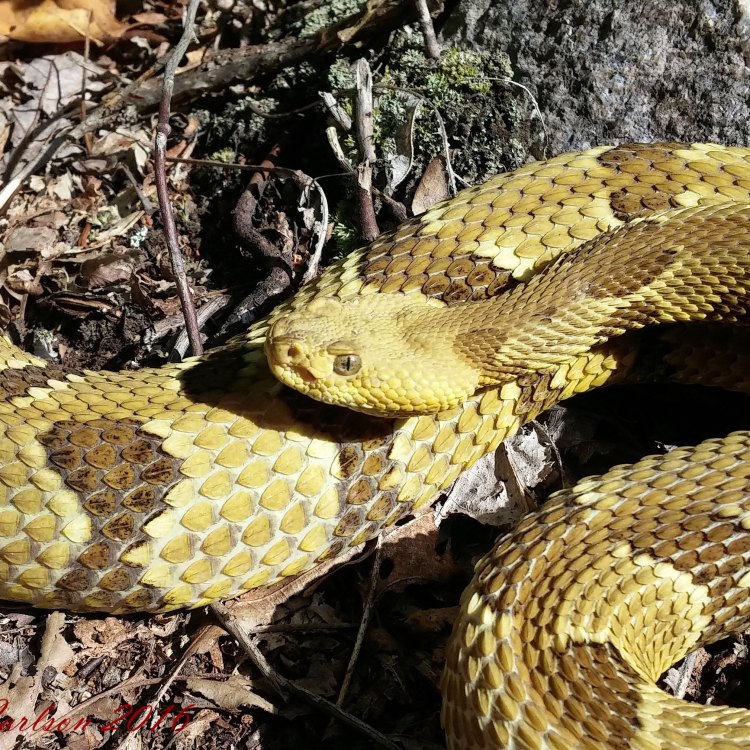
The Fascinating World of the Timber Rattlesnake
Disclaimer: The content provided is for informational purposes only. We cannot guarantee the accuracy of the information on this page 100%. All information provided here may change without prior notice.

